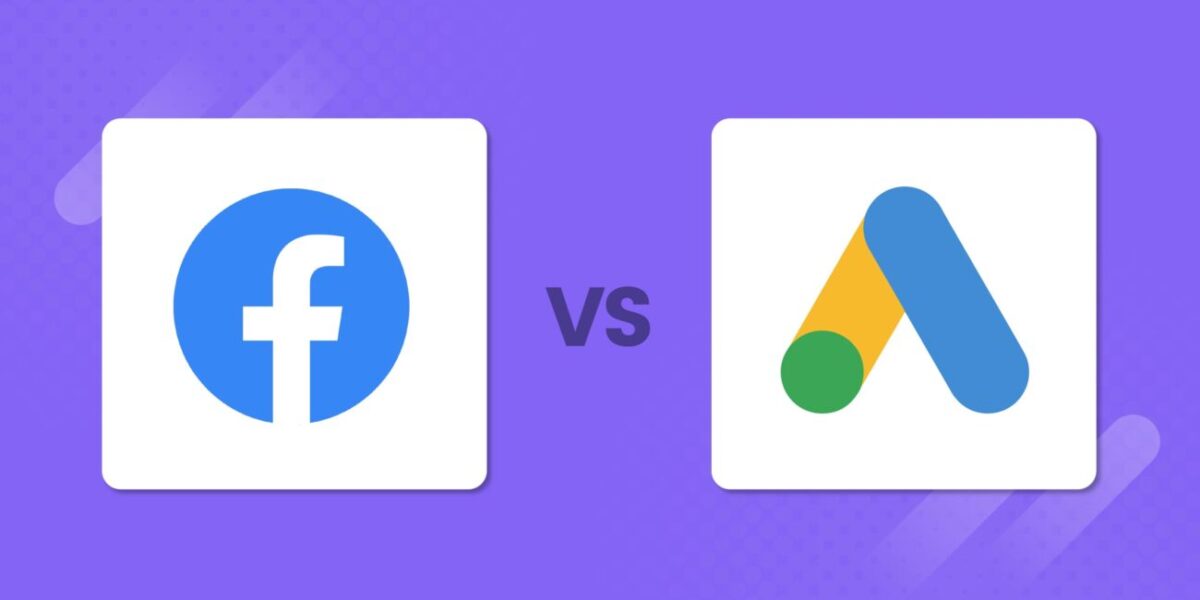
Thanks to the internet, just about any company can run an ad campaign that’s affordable, targeted and measurable. It can be a challenge to know where to start, though.
The two main options for online advertising include search engines and social media. Within those, the big players are Google and Facebook.
When considering Google Ads vs. Facebook ads, it’s important to understand that both platforms serve different business objectives. Google Ads helps businesses find new customers, while Facebook helps new customers find your business.
In this post, we’ll look at the pros and cons of advertising on Google and Facebook and which you should choose based on your needs. (Spoiler alert: It doesn’t have to be an either/or decision. It’s a best practice to combine the two, which will allow you to take advantage of the strengths of both platforms and shift strategy and budget as needed.)
Google Ads vs. Facebook Ads: What’s the Difference?
There’s no question that both platforms are powerhouses. About a trillion Google searches are conducted per year, and Google’s advertising network reaches an estimated 90 percent of people online. Facebook is the most prominent social network with more than 2 billion active users.
When it comes to the primary difference between Google and Facebook Ads, you can think of it this way: Google Ads help businesses find new customers through keywords, while Facebook advertising helps users find businesses based on their online activity and topics that interest them.
Now, we’ll unpack the details about both.
Google Ads: Paid Search
Google Ads target users who are searching for products and services like yours. The Google Ads platform, formerly known as Google Adwords, uses an advertising model referred to as pay-per-click, or PPC.
Here’s how it works: When setting up your Google Ads campaign, you’ll choose keywords that are relevant to your business. When a user enters those keywords into Google, text-based Google Ads are displayed at the top and bottom of the search results. Google Ads also appear on YouTube and elsewhere on the web:

Whenever a user clicks on one of these ads, the advertiser is charged, which is where the term “pay per The advertiser is charged whenever a user clicks on the ad. This is where the term “pay per click” comes from. Essentially, businesses are paying for the chance to find new customers based on the search terms they enter into Google.
Advertisers can monitor the performance of their ads from a dashboard and make any necessary adjustments in order to maximize ROI.
Facebook Advertising: Paid Social
Like Unlike Google Ads, Facebook advertising is not keyword-based. Instead, Facebook advertising leverages user data such as gender, age, income, location, online behavior, interests and engagement patterns.
Users provide Facebook with information about their lives, which Facebook collects and shares with advertisers, who can then target their ads toward those users who are most likely to be interested in their products or services.
Just like Google Ads, Facebook’s ad platform follows the pay-per-click model, so advertisers only incur a charge when someone clicks on their ad.
How do you know if your ad is effective or not? Facebook provides advertiserswith a dashboard so you can monitor the performance of your ads and adjust as needed.
Here is what a typical Facebook Ad looks like:
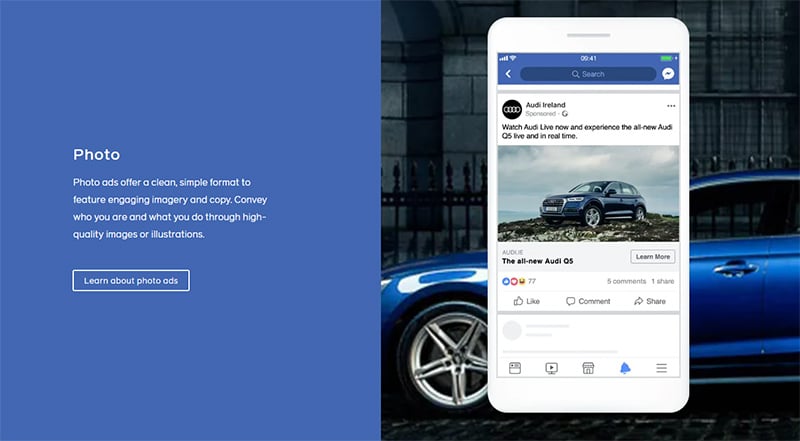
Google Ads: Pros and Cons
It’s important to be informed on online advertising so you can spend your budget wisely. Both platforms have areas where they shine and areas where they fall short. Let’s take a look.
Advantages of Google Ads
As we mentioned, a huge selling point for Google Ads is Google’s immense reach. Most internet users use Google, so it has a built-in advantage. Here are other places where Google Ads shine.
Pro: You can leverage user intent.
Google Ads can be effective at targeting potential customers at every stage of their buying journey, from the research phase to conversion. (A “conversion” is when a user takes an action that you want them to take, such as buying your product.) The key here is to use keywords that range from broad to very specific.
So, using broader keywords means your ads will be shown to people conducting broader Google searches. For example, let’s say you sell cat trees. If someone Googles “cat tree,” they’re probably in the research stage.
If someone Googles “cat tree with scratching post no assembly required,” they know exactly what they’re looking for, they have more intent, and they’re probably very close to converting. These are called “long tail keywords,” and including them in your ad campaign could boost your conversion rate.
Pro: You get a lot of data to help guide your marketing strategy.
Google Ads provides a wealth of data on your ad campaigns, allowing you to measure your results. Here are some metrics advertisers can have access to through the user dashboard:
- The amount of traffic your ads drive to your website
- The average cost to create a conversion
- The rate at which people interacted with your ad
- The number of times your ad was displayed to users
- Which keywords gave you the best results
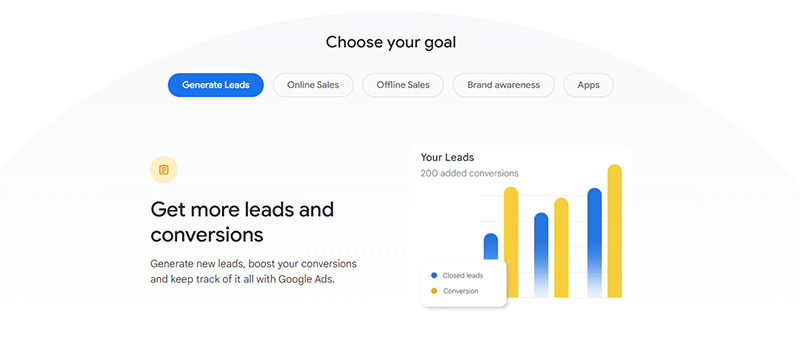
By tracking this data, you can understand what’s working and what’s not, which can allow you to make informed decisions about where to invest in your campaign.
Pro: You can control your costs.
There is no spending minimum when it comes to Google Ads, and advertisers can select how much they want to spend per month, per day or per ad. Advertisers only get charged when someone clicks on their ad. Further, the platform is set up so that advertisers pay the lowest possible price for a click.
A misconception about Google Ads is that the advertiser with the biggest budget will be more successful, but that’s not the case. Google Ads focuses primarily on the quality and relevance of ads, not how much advertisers spend. This means high-quality, optimized ads that are relevant to users will be displayed more often.
Disadvantages of Google Ads
Of course, there are also significant drawbacks to launching a Google Ads campaign. The most obvious one? You are charged every time a user clicks on your ad whether they convert or not, so you could easily burn through your budget without having much to show for it. Some others:
Con: It can be expensive.
While you can control how much you spend on Google Ads, it could be costly to be successful. Paying the lowest possible price for a click on your ad doesn’t mean the cost will be low. This is because you’re competing with other advertisers who are offering the same products and services as you, which drives up costs. This is especially true when it comes to certain sectors, like legal services, which has some of the highest cost-per-click rates.
Con: The learning curve can be steep.
It can be challenging and time consuming for a newcomer to create and launch Google Ads. Some prior knowledge is helpful, especially since the platform regularly adds new features and capabilities. The good news is that there is an abundance of free online resources available that will walk you through the process.
You could also opt to use the simplified version of Google Ads, called Google Ads Express. It’s designed for users who are new to online advertising, so it can be a great way to learn.
Con: It’s a short-term investment.
Google Ads can be a very effective way to drive traffic to your website, but there are limitations. The lifespan of a Google Ad is short. While your ad is active, you can expect to see an increase in website traffic, but once your budget is spent, the ads turn off and your traffic can decline.

On the other hand, search engine optimization is a longer-term way to improve the ranking of your website organically, without having to spend anything on ads. The downside is that it can take months or longer for you to notice an improvement in your traffic.
Facebook Ads: Pros and Cons
A compelling pro of Facebook ads is that advertisers can use custom calls to action buttons, which give instructions and encourage your potential customers to take a particular action. CTAs can drive up engagement by up to a whopping 200%. Here are some other advantages to advertising on Facebook.
Pro: The setup process is simple.
One of the most important benefits of advertising on Facebook is how easy it is to get started. You can create an ad account from within your personal Facebook account, and then set up goals, design your ads and more, using the built-in tools.
Facebook also makes it easy to try out Facebook advertising without a long-term commitment. You can set up a short-term advertising campaign and see what kind of results you get before sinking a lot of money into it.
Pro: The targeting capabilities are unmatched.
Users disclose an abundance of personal information on Facebook, which the platform then uses for advertising purposes. This means advertisers can get very granular and set up custom audiences for every ad based on specific factors such as age, hobbies, location, interests, marital status, income, gender and much more.
Referred to as a “lookalike audience,” this approach is a way for your ads to reach new people who are likely to be interested in your business because they share similar characteristics to your existing customers. This increases how effective your ads will be because you’re only showing them to people who are most interested in what you’re offering.
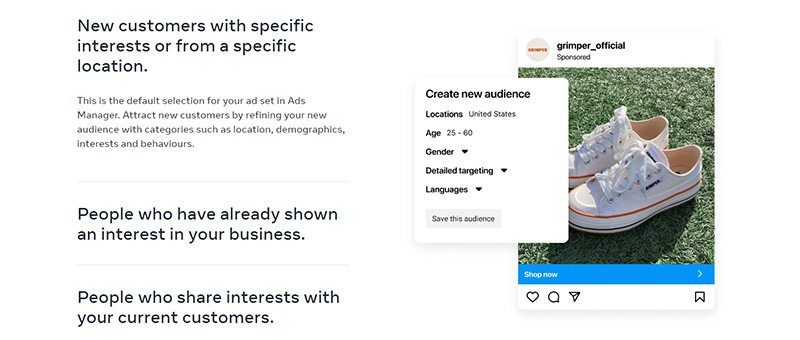
Let’s say you sell luxury cat trees from a brick-and-mortar store in Philadelphia. You could choose to display your ad just to people who own cats, live in Philadelphia (you can even pinpoint an exact neighborhood) and earn a certain income.
Pro: It offers more ad format options.
There is undoubtedly a Facebook ad format option to suit the needs of most advertisers. The options include video ads, single image ads and carousel ads as well as boosted posts. The platform allows advertisers to test out different formats at the same time to A/B test what is most effective.
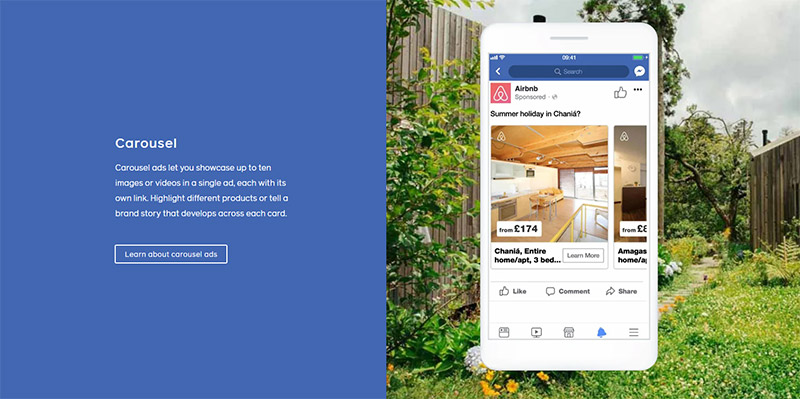
Facebook also allows advertisers to customize their call-to-action buttons to drive certain actions, like registering their email or scheduling an appointment.
Disadvantages of Facebook Advertising
A glaring disadvantage for some potential advertisers is that some types of ad content is prohibited or restricted, like alcohol sales and gambling. Here are some other cons:
Con: Your target audience might not be there.
When you use Google Ads, your ads are displayed to a vast audience, but on Facebook, users must be actively using the platform in order to see your ads. Not only that, but Facebook’s popularity is diminishing, particularly among younger users. Millions of users have changed their social media habits over the course of the COVID-19 pandemic and have shifted to other platforms, particularly TikTok.
Con: It’s not available to all advertisers.
In order to be eligible for Facebook advertising, you have to reach certain milestones. For example, you need to be active on Facebook with an engaged audience on your business page or your ads might be considered spam. Also, you need an audience of more than 1,000 followers before you’re eligible to use certain targeting tools that would increase the effectiveness of your ads.
Con: Spam clicks could artificially inflate your results.
A huge problem with Facebook advertising is that there are vast numbers of fake profiles and spam accounts that are clicking, liking and sharing your content to make their profiles look authentic. If you see your engagement increase, but there is no corresponding uptick in actions taken, such as signups or conversions, you could be a victim of this.
Con: Granular targeting is on its way out.
One of the biggest perks of the Facebook ad platform is that it allows advertisers to target specific groups of people. However, with improved data privacy laws and restrictions on data collection, granular targeting is becoming a thing of the past. If advertisers no longer have the ability to narrow their audience, the effectiveness of Facebook ad campaigns could be diminished.
Google Ads vs. Facebook Ads: Final Thoughts
To summarize, the advertising platforms for both Google and Facebook use the pay-per click model in which advertisers pay each time a user clicks on their ad. Google Ads is a paid search platform that relies on Google users’ keyword searches. Facebook is a paid social ad platform with granular audience targeting options.
The platform you select depends mainly on your budget, your objectives and your audience. While Google Ads can be more expensive than Facebook, it’s an option that makes sense for businesses that have the budget for it. Facebook advertising is meant to capture the attention of a specific audience with ad options that allow for more creativity.
Given that both ad platforms are so different, using both is a powerful way to get your products or services in front of the right audience at the right time. The key is to keep your marketing messaging consistent across both Google and Facebook while also making effective use of the strengths of both platforms.










